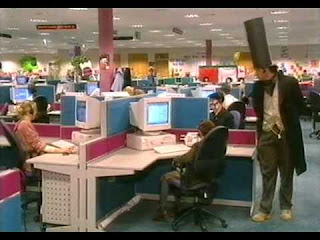The Industrial Revolution, manufacturing companies began experimenting with ways to move large quantities of their goods at once. Skids were the first pallets ever developed, appearing in American factories along with low-lift trucks in the late 1880s. These trucks were hand operated, could only lift the goods 5 to 7 centimeters off the ground, and because they required so much manual effort from the operator, could only move the goods about one meter laterally.
Invention and Development
Even though these early forklifts were hard to operate, they quickly proved their worth, and major companies grabbed a hold of the idea and worked to make more efficient models. By the 1910s, manufacturing, shipping and machinery companies worked off each other's ideas to create a higher lift truck that could finally lift goods more than 5 centimeters off the ground. Along with this truck came the standardisation of the pallet, which is the same model we use today, allowing goods to be stacked on top of each other safely. This standardisation allowed machinery companies like Clark and Yale to produce lift trucks (forklifts) that could be used by any industry.

The 1920s and 1930s brought sophistication to the forklift. For the first time, it started looking like its own specialised machine instead of a simple tractor with a lifting attachment. Trade magazines ran advertisements for the sale of forklifts, and major forklift manufacturers made strides in the industrial market.
Wartime Innovation
World Wars I and II happened simultaneously along with the development of the forklift, and if it were not for this valuable piece of technology, feuding countries may not have been able to provide weapons and supplies to their troops at the rates needed. World War II acted as a major spark in forklift development. It was an absolute necessity for companies to load wartime goods as quickly and efficiently as possible onto loading docks to be shipped overseas. From this necessity, engineers added hydraulic technology, pallet lifts, and side movements.
Shaping History
Once the wars ended, the necessity, value and utility of the forklift was unquestionable. It was an irreplaceable piece of workplace technology, but companies were still looking for ways to improve. In the 1950s, manufacturing plants decided to focus on getting the most out of their storage facilities, stacking their goods on higher shelves and in tighter spaces. From this desire, reach trucks, lifting up to 2,000 kilograms to a maximum height of 9 meters, were developed. With their investment in industrial inventions like the forklift, western countries like the United Kingdom and the United States shaped history, establishing their leadership in global shipping.
Today, more than 150,000 forklift trucks for sale are purchased each year. World is modern today.
Invention and Development
Even though these early forklifts were hard to operate, they quickly proved their worth, and major companies grabbed a hold of the idea and worked to make more efficient models. By the 1910s, manufacturing, shipping and machinery companies worked off each other's ideas to create a higher lift truck that could finally lift goods more than 5 centimeters off the ground. Along with this truck came the standardisation of the pallet, which is the same model we use today, allowing goods to be stacked on top of each other safely. This standardisation allowed machinery companies like Clark and Yale to produce lift trucks (forklifts) that could be used by any industry.

The 1920s and 1930s brought sophistication to the forklift. For the first time, it started looking like its own specialised machine instead of a simple tractor with a lifting attachment. Trade magazines ran advertisements for the sale of forklifts, and major forklift manufacturers made strides in the industrial market.
Wartime Innovation
World Wars I and II happened simultaneously along with the development of the forklift, and if it were not for this valuable piece of technology, feuding countries may not have been able to provide weapons and supplies to their troops at the rates needed. World War II acted as a major spark in forklift development. It was an absolute necessity for companies to load wartime goods as quickly and efficiently as possible onto loading docks to be shipped overseas. From this necessity, engineers added hydraulic technology, pallet lifts, and side movements.
Shaping History
Once the wars ended, the necessity, value and utility of the forklift was unquestionable. It was an irreplaceable piece of workplace technology, but companies were still looking for ways to improve. In the 1950s, manufacturing plants decided to focus on getting the most out of their storage facilities, stacking their goods on higher shelves and in tighter spaces. From this desire, reach trucks, lifting up to 2,000 kilograms to a maximum height of 9 meters, were developed. With their investment in industrial inventions like the forklift, western countries like the United Kingdom and the United States shaped history, establishing their leadership in global shipping.
Today, more than 150,000 forklift trucks for sale are purchased each year. World is modern today.










No comments:
Post a Comment